The first contacts between Native inhabitants and European newcomers took place in the 16th and 17th centuries. At that time, hundreds of aboriginal nations inhabited North America. Each had its own language and traditions.
As in Europe, indigenous peoples maintained vast networks of trade and alliances, punctuated by occasional conflicts. Some of these nations disappeared in the 17th century due to wars or deadly diseases contracted from the Europeans.
Native populations were trading among themselves well before the arrival of the first Europeans. Major trading routes criss-crossed the continent in all directions. Boundaries shifted constantly in the wake of conflicts and population movements.
After the arrival of the Europeans, Native involvement in the fur trade largely depended on where the companies built their trading posts. As European traders expanded their operations westward, establishing posts along the way, the Ojibwa, Cree and Chippewyan nations became the most active in the trade because the trade routes lay within their territories.
Native contribution was crucial to the trade. In addition to supplying the forts with furs, Aboriginal nations provided food such as wild rice, dried meat and corn flour. They also manufactured snowshoes, toboggans and moccasins. The birch bark canoe was an indigenous technology that Europeans adopted and used to their advantage. Aboriginal peoples had vital knowledge of the land, and European traders often recruited them as guides and interpreters. Native allies also provided protection and assistance during times of conflict. Finally, Native women married European traders à la facon du pays, thus sealing alliances with kinship.
During the height of the NWC fur trade (1779 - 1821), the following nations lived along the trade routes between Montreal and Fort Chippewyan:
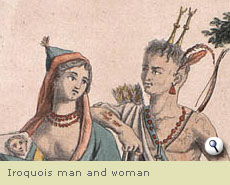
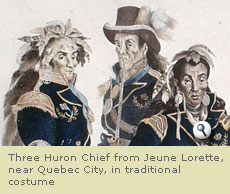
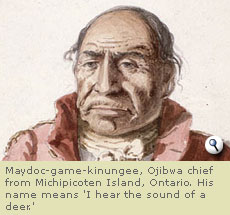
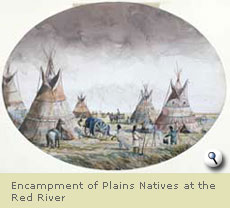
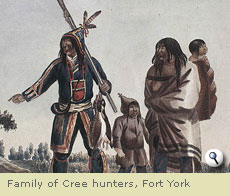
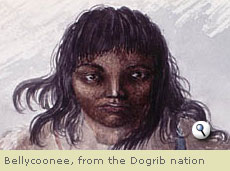
With the arrival of Europeans in the trading networks of the North West, relationships among Native nations shifted in response to the new dynamic. For instance, while the Algonquins and the Hurons acted as middlemen between the French and other nations, the Iroquois wanted more direct trade links. A great rivalry existed between the two at the end of the 17th century.
The Ojibwa were very close to the Northern Cree, but also to the French, with whom they traded extensively and fostered many intercultural marriages. For their part, the Cree sided with the Assiniboine in order to expand their influence in the North West. From then on, they had a central role in the growth and maintenance of trade.
Europeans at first conducted business according to Native-imposed rules. The European system simply grafted itself onto a pre-existing aboriginal trade network, adapting to local customs. Competition among companies gave Natives different groups to negotiate with. Over time, Europeans and Natives devised cross-cultural trading practices based on their interdependent relationship. By the beginning of the 19th century, a profound blending of cultures had occurred between Europeans and Natives.
The link between humans and animals was at the core of Native wisdom. They recognized the value of the connection between humans and nature, as well as the fine balance that resulted. The never-ending demand for trading goods upset this relationship, placing unprecedented pressure on fur-bearing animals.
| Previous | Top of page | Next |